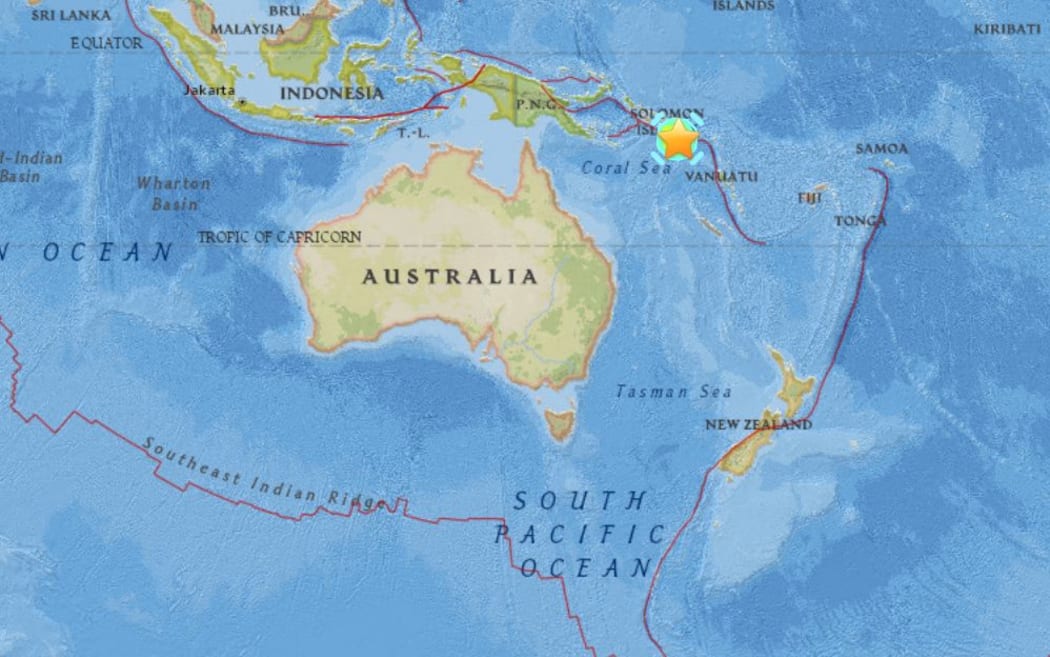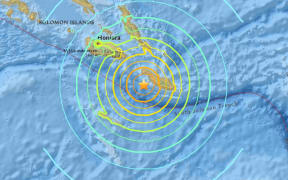A tsunami threat in the Pacific from a 7.8-magnitude earthquake has largely passed, the Pacific Tsunami Warning Centre says.

The quake is centred 68km west-south-west of Kirakira, Solomon Islands. Photo: Supplied / USGS
However, Solomon Islands residents have reported observing high waves.
The quake struck at about 6.30am NZT, 70km off the Solomon Islands.
It prompted a widespread tsunami warning for Pacific countries, including New Zealand, where civil defence issued a marine and beach threat.
Civil Defence officials lifted the threat for New Zealand just before 8.30am.
Officials warned there could still be "strong and unusual currents" for the rest of the day, especially on the west coast of the country, and advised people to stay out of the water.
Other Pacific nations that were initially at risk of waves included the Solomon Islands, Vanuatu, Papua New Guinea, New Caledonia and Tuvalu.
Tsunami watches were also issued for Hawaii and American Samoa.
However, the Pacific Tsunami Warning Centre issued an updated report at 8.46am NZT saying the tsunami threat had "largely passed".
"This will be the final statement issues for this event unless new information is received or the situation changes," the centre said.
"Minor sea level fluctuations of up to 0.3 metres above and below the normal tide may continue over the next few hours."
The National Disaster Management Office of Solomon Islands said the southwest coast of Makira Island had reportedly experienced a tsunami, but there was no information about how big the waves were.
Communities had confirmed a tsunami reached the island, the office said.
Local nurse Hedson Taro told RNZ International that Solomon Island villagers on the southern side of the island were collecting fished washed up on shore by high waves.
The sea had risen and pulled canoes out to sea, he said.
RNZ International's Solomon Islands correspondent Dorothy Wickham said people in Honiara had run for the hills when the quake struck but were now starting to head home.
Those with businesses were checking out their properties for damage.
There was huge panic at the National Referral Hospital in Honiara when the quake struck, Ms Wickham said.
Nurses at the hospital reported that the power went out and patients and their relatives were running around.
Police at Kirakira in Makira province reported that as of 8am NZT no major damage had been reported.
Ms Wickham said there needed to be a better system for Civil Defence officials to communicate with residents. Radio services were still playing automated music at that time of the morning and she only knew about the tsunami risk from the internet.
GNS duty seismologist Geoff Kilgour said the quake was about 40km below the surface.
It appeared to be a reverse fault, where the land was pushed up, which was why tsunami waves could have been generated in the Pacific, he said.


